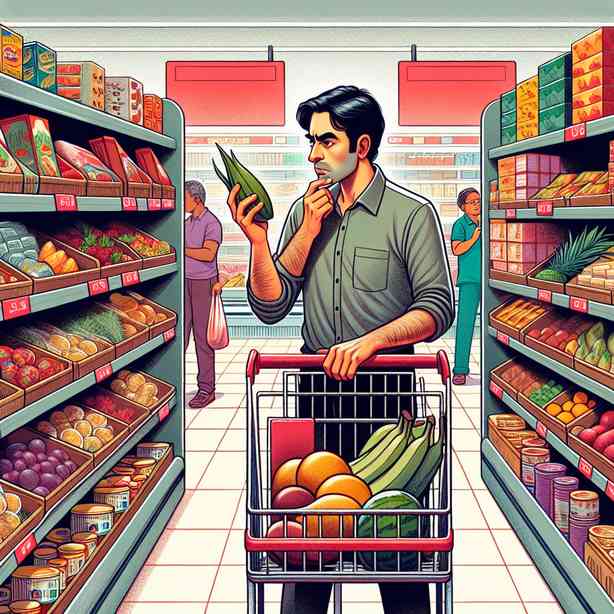
Online shopping has revolutionized the way we purchase groceries and other essentials. With just a few clicks, we can browse through thousands of items, add them to our cart, and check out without ever leaving our homes. However, many of us have experienced that moment of hesitation when it comes to finalizing our orders. Before hitting the “checkout” button, we often find ourselves reviewing the contents of our virtual shopping carts, contemplating whether to keep certain items or to remove them altogether. This phenomenon not only highlights the complexities of consumer behavior but also reflects our emotional and psychological connections with food and shopping.
One common scenario is the initial addition of items that seem appealing but eventually lead us to second-guess our choices. Various factors contribute to this indecisiveness, including the price of items, dietary considerations, or simply a fleeting desire. For example, let’s consider a gourmet cheese that catches our attention. It looks delicious and, in the moment, aligns with our thoughts of hosting a gathering or indulging in a treat. However, as we proceed to check out, we might weigh the cost against our current budget or question how often we actually consume such specialty items. This thought process can lead us to ultimately remove that cheese from our cart.
Furthermore, the act of removing items from our shopping cart can sometimes reflect our deeper feelings toward food. It could signify guilt or reluctance stemming from past experiences, such as overindulging or wastage. For instance, if we previously purchased an item like a fancy cake only to have leftovers that went stale, we might think twice before buying that cake again. This situation encapsulates the emotional ties we have with food—it can evoke memories, both positive and negative, influencing our purchasing decisions.
Another aspect to consider is the influence of health trends and societal pressures. With increased awareness of dietary restrictions and healthy eating, consumers often find themselves at a crossroads. Imagine a trendy superfood that promises health benefits. We might add it to our cart during our initial browsing session, motivated by its glowing reviews and the desire to improve our wellness. But upon reflection, we might question its compatibility with our current lifestyle or existing dietary habits. This tension between desire for health improvement and the practicality of our everyday consumption is a common reason for removing items from our cart.
In the realm of online grocery shopping, convenience plays a significant role in our decision-making process. Perhaps we add an item to the cart out of convenience, even though we are not entirely committed to purchasing it. For instance, an impulse buy of a pre-packed meal may seem ideal for a busy week ahead. Still, as we scan our grocery lists and consider the time we’ll have to cook or the ingredients we already have at home, we may conclude that the purchase is unnecessary and remove it. This aspect of shopping highlights the contrast between immediate gratification and thoughtful decisions regarding our sustenance.
It is also essential to acknowledge the role of marketing strategies in influencing our decisions. Retailers use various methods to encourage spending, such as discounts on bulk purchases or “limited-time offers.” Such tactics can create urgency, prompting users to add items to their carts. However, upon reflection, we may realize that these discounts do not align with our actual needs or consumption patterns, leading us to remove them before completing our purchase. This scenario emphasizes the importance of being a conscious consumer—understanding that not every marketing tactic requires action, and sometimes, less is more.
As we navigate through the complexities of online shopping, it is prudent to approach it with mindfulness. This means taking time to reflect on our choices rather than succumbing to impulse buys. By doing so, we can cultivate a more positive relationship with food, aligning our purchases closely with our values, needs, and lifestyle choices. A well-curated cart reflects not only our immediate desires but also our long-term goals concerning health, budget, and sustainability.
In conclusion, the act of adding and removing items from our online shopping cart is a microcosm of broader consumer behavior. Each decision we make is intertwined with our emotions, past experiences, and societal influences. As we strive to be more mindful consumers, it is essential to reflect on our motivations and decisions to ensure that our purchases genuinely serve our needs. By understanding the underlying dynamics at play, we can forge a healthier relationship with food and shopping, ultimately leading to a more satisfying and intentional purchasing experience. This journey does not end at the checkout screen but continues to shape our lifestyle choices long after the purchase is made.


